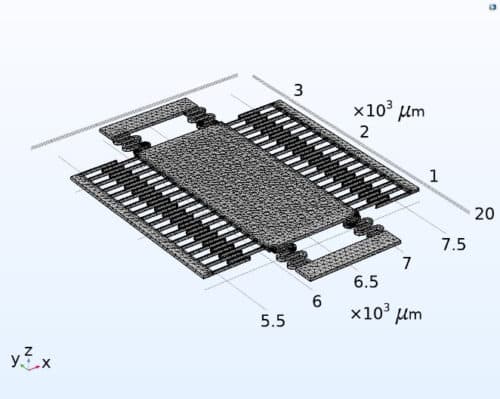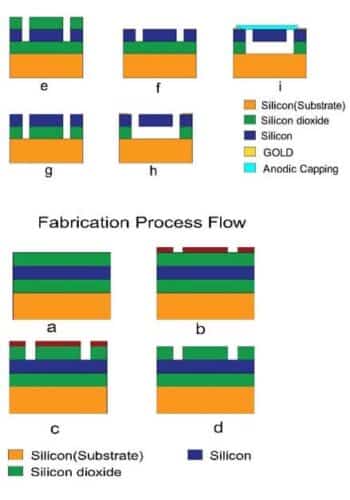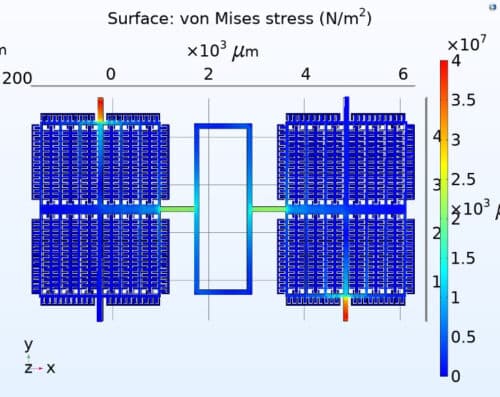The skies become safer, more precise with the groundbreaking integration of MEMS-based gyroscope and magnetometer in the Magneto-Gyro sensor, revolutionising aviation navigation.
Sensor fusion is the process of combining data from multiple sensors to obtain a more accurate and comprehensive understanding of the surrounding environment. By integrating information from different sources, such as cameras, lidar, and radar, sensor fusion enhances perception capabilities for applications like autonomous vehicles and augmented reality. Magneto-Gyro sensor is a MEMS-based sensor where two gyroscopes and a magnetometer are combined. The Magneto-Gyro sensor is a device suggested for instrument landing systems (ILS) in aircraft. A MEMS gyroscope and magnetometer are combined as a single device providing the attitude estimation and the heading of the system. Specifically for measuring the wing-to-wing attitude of the aircraft while landing along with the heading direction in an ILS. A resolution of 3 rads/sec has been achieved for the gyroscope.

Instrument Landing System (ILS) provides the pilot of an aircraft with the vertical and horizontal positions of the vehicle while approaching landing. Though advanced landing systems have been developed, they still lack lots of studies, and improvements need to be made. ILS is considered as one of the best navigational aids in the history of aviation, with a few improvements like more sensitivity and a few safety requirements, ILS can still be used as a primary landing system in aircraft.
Enhancing ILS sensitivity with MEMS Magneto-Gyro sensors
Suggesting an aid to the sensitivity of the system, we put forth a magnetometer and a gyroscope combined MEMS device. A MEMS gyroscope provides the measurement of the angular rate of the system. A three-axis gyroscope has been suggested to measure the drift in all three axes, providing a 3D orientation of the system in space. This angular rate measurement will help in the estimation of the system’s attitude, which is very useful in ILS. During the landing of the flights, stalling happens when the angle of attack exceeds the critical angle. To detect the wing-to-wing deviation from the initial axes, the use of the MEMS gyroscope is suggested. The MEMS magnetometer provides a measurement in the horizontal axis parallel to the earth’s magnetic field, taking the same as a reference. This can help in providing the heading of the system.
Sensor fusion: Enhancing aviation precision
In aviation, a gyroscope sensor is a device that measures and detects angular motion or rotation. It is a crucial component used in aircraft for various purposes, including navigation, attitude determination, and stability control. A gyroscope sensor consists of a spinning rotor that maintains a fixed axis of rotation, regardless of the aircraft’s movement. As the aircraft turns or experiences angular acceleration, the gyroscope detects and measures these changes accurately. This information is then used by the aircraft’s flight instruments and navigation systems to provide vital data to pilots. Gyroscopes are employed in attitude and heading reference systems (AHRS) to determine the aircraft’s orientation in terms of roll, pitch, and yaw. They help maintain stability by providing feedback for autopilot systems, aiding in maintaining a desired flight path. Modern aviation systems often use inertial navigation systems (INS) that combine gyroscopes with accelerometers to provide accurate and continuous positioning information even in the absence of external references like GPS. Gyroscopes are also found in instruments like turn coordinators, gyrocompasses, and gyroscopic artificial horizons. Overall, gyroscope sensors play a critical role in aviation by enabling precise navigation, maintaining stability, and enhancing flight safety.
In aviation, a magnetometer sensor is an instrument used to measure and detect the Earth’s magnetic field. It provides crucial information for navigation and heading determination in aircraft. A magnetometer sensor utilises the principles of magnetism to measure the intensity and direction of the magnetic field. In aviation, it is commonly used as a primary or backup source for determining the aircraft’s heading. By detecting the Earth’s magnetic field, the magnetometer allows pilots to establish their orientation relative to magnetic north. Magnetometers are employed in various aviation systems, including compasses, and heading reference systems. They provide accurate heading information that can be used by flight instruments and autopilot systems to maintain proper course and heading during flight. Additionally, magnetometers play a crucial role in navigation systems, especially in conjunction with other sensors like GPS. By combining magnetometer readings with GPS data, aircraft navigation systems can provide more accurate and reliable positioning information, even in situations where GPS signals may be degraded or unavailable. Overall, magnetometer sensors are essential in aviation for accurate heading determination, navigation, and enhancing flight safety by providing reliable information about the Earth’s magnetic field.
Fabrication of MEMS Magneto-Gyro sensor
The steps that can be followed to fabricate the sensor are shown below:

The above image shows a SOI wafer with a thermally grown oxide layer. On exposure to UV PPR patterning is done on the oxide layer as shown in b. Using Buffer Oxide Etching, SiO2 patterning is achieved. Then the PPR is stripped off using acetone as shown in d. By DRI etching Silicon is patterned as in e. By DRI etching the SiO2 layer is removed as shown in g. Then the proof mass is released by wet etching as in h. By metal deposition gold is deposited and capping is done by anodic bonding as shown. An external magnetic field is achieved by a pair of magnetic flux concentrators made of a soft magnetic material like NiFe alloy. The flux concentrator is placed along the y axis on either side of the magnetometer. Between 10-3T and 10-6T the suggested magneto-gyro sensor works the best.

The fusion of magnetometer and gyroscope sensors in aviation has several important applications. By combining the data from these sensors, aircraft systems can achieve enhanced navigation, attitude determination, and situational awareness.
Sensor fusion: Applications in aviation
Heading determination: The magnetometer measures the Earth’s magnetic field and provides a reference for the aircraft’s heading. However, it can be affected by external magnetic disturbances. By fusing the magnetometer data with the gyroscope, which measures the aircraft’s angular rotation, a more reliable and accurate heading can be obtained, compensating for any magnetic interference.
Attitude and navigation systems: Gyroscopes measure the aircraft’s rotation rates, while magnetometers provide information about the Earth’s magnetic field. By fusing these two sensor outputs, the aircraft’s attitude (roll, pitch, and yaw) can be accurately determined. This information is crucial for autopilot systems, flight control, and navigation.
Situational awareness: The fusion of magnetometer and gyroscope data can aid in situational awareness. It helps in detecting and compensating for sensor biases, calibrating the sensor outputs, and providing a more robust and reliable representation of the aircraft’s orientation and movement.
Overall, the fusion of magnetometer and gyroscope sensors in aviation allows for improved heading determination, precise attitude and navigation estimation, and enhanced situational awareness, contributing to safer and more efficient flight operations.
The integration of a MEMS-based gyroscope and magnetometer in the design of the Magneto-Gyro sensor represents a significant advancement in aviation technology. The article highlights the fabrication steps involved in creating this sensor, emphasising its potential to address the sensitivity limitations of the conventional Instrument Landing system.
By combining the precise measurement of angular motion and the detection of magnetic fields, the Magneto-Gyro sensor offers improved efficiency and reliability in aircraft navigation. This innovation holds great promise for enhancing the accuracy and effectiveness of attitude determination, stability control, and overall flight safety.
With its ability to provide more accurate and comprehensive data, the Magneto-Gyro sensor has the potential to revolutionise the aviation industry by enabling pilots to navigate and land aircraft with greater precision, even in challenging conditions. The successful development of this integrated sensor system opens up new possibilities for advancing aviation technology and ensuring safer and more efficient flights.
Duraiarasu E, IVth year, B.E ECE, Rajalakshmi Engineering College, Chennai, Tamil Nadu.







